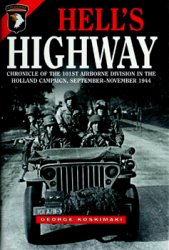Together with Gen Tolbukhin’s Third Ukrainian Front, endeavoured to encircle Budapest. Yet again Hitler interfered in his generals’ plans and stubbornly refused to contemplate a German withdrawal from the beleaguered city. On December 26 the encirclement was completed but the final attack was delayed and German hopes for a relief operation rose. The first attempts began on January 1 1945 but these were frustrated and, as the Soviet stranglehold on Budapest tightened. Hitler continued to refuse to withdraw. In the face of a renewed Soviet attack Pest was evacuated but the soldiers and civilians who reached the sanctuary of Buda were only postponing the inevitable. On February 11 the German commander at last gave orders for a breakout but by now the Soviet investment was too complete and they were unable to pierce it. On February 13 the shattered remnants of the city fell with 30,000 prisoners joining the 100,000 already captured during the course of the battle. MS.
Budenny, Marshal Semyon
(1883-1973). Russian. Veteran but unsuccessful Soviet commander during World War II. Budenny was drafted into the Imperial Russian army as a conscript in 1903 and fought in the Russo-Japanese War, 1904—05, and World War I, rising to the rank of cavalry sergeant. Following the Bolshevik Revolution, he joined the Red Army and rapidly rose to senior command during the Civil War. In October 1918 he distinguished himself in defeating Gen Denikin’s forces and by 1920 was in command of the First Soviet Cavalry Army. Although he did not acquit himself so well in the war with Poland, Budenny’s career continued to prosper. In 1924, he became a member of the Revolutionary Military Council. Aided by Stalin, he emerged at the top of the Red Army hierarchy, a preeminence confirmed in 1935 by his being made one of the first five Marshals of the Soviet Union. On Germany’s invasion of Russia, Budenny was appointed c-in-c of the Southwestern Front and ordered to hold the Ukraine. Although he commanded 69 divisions, Budenny was overwhelmed by the speed and daring of his opponents as they began an audacious double encirclement of his forces that soon became trapped in a salient around Kiev. Inhibited by Stalin’s orders not to withdraw, Budenny also exhibited a lamentable absence of strategic acumen. He reacted far too slowly to the Germans’ advances and before long found himself in a hopeless position. On September 18 he was replaced by Marshal Timoshenko and flown out of Kiev shortly before the city’s fall. More than
500,000 of his men were not so fortunate and although he avoided major recriminations, he played no further part in the war. However, his former revolutionary exploits stood him in good stead and, aided by his larger-than-life personality, he remained a popular Soviet hero until his death. MS.
Buerat, Battle of (January 15-16 1943). Rommel tried to halt Eighth Army (Montgomery) at Buerat, 200 miles (320km) east of Tripoli, but was outflanked by the New Zealand and 7th Armoured Divisions. The 51st Highland Division broke through on the coast road forcing Rommel to continue his withdrawal on Tripoli.
Bukovina see Romanian campaign.
Bulge, Battle of the see ARDENNES OFFENSIVE.
Bull Ring. Name given to the training grounds in the sand dunes at the British base at Etaples during World War I. The harshness of the training here was a primary cause of the Etaples Mutiny of 1917.
Bullecourt. Village in the Hinden-burg Line, southeast of Arras. During the British Arras offensive in 1917, it was attacked by the 4th Australian Division, of Gough’s Fifth Army, on April 11 but poor artillery support and the failure of tanks to prepare the way for the infantry led to heavy casualties and further shook Australian faith in British generalship. Another attack, by Australian and British divisions, which began on May 3 and was prolonged to relieve pressure on the mutinous French army, succeeded in clearing Bullecourt by May 17 and, despite its high cost, demonstrated that the Hin-denburg Line was not impregnable. PJS.
Buller, Gen Sir Redvers Henry
(1839-1908). Br. See boer war.
Billow, Field Marshal Karl von
(1846-1921). Ger. In August 1914, Billow commanded the German Second Army, operating to the left of von Kluck’s First Army on the right wing of the advance through Belgium, where he was responsible for ordering the destruction of the town of Andenne and the massacre of c200 civilians (August 20-21) in reprisal for the alleged activities of francs-tireurs. At Charleroi, August 22-23, Biilow, supported by Gen Max von Hausen’s Third Army, forced the retreat of Lanrezac’s French Fifth Army, thus leaving the bef exposed to von Kluck’s attack at Mons. However, Lanrezac’s counterattack at Guise (August 29) delayed Billow’s advance long enough for a gap to open between Second and Third Armies and the fast-moving von Kluck, while at the same time the German right was significantly weakened by Moltke’s detachment of two corps to the East Front. This proved Billow’s downfall on the Marne, September 5-10; the French Fifth Army (Franchet d’Esperey) and the BEF moved into the gap between von Kluck and Billow, while Foch’s Ninth Army threatened to open a further gap between Billow and Hausen, on his left. With his right flank driven in by Fifth Army’s night attack on September 8-9, Biilow pressed for a withdrawal: Moltke approved, ordering von Kluck also to retreat and thus signalling the collapse of the Schlieffen plan. In 1915, Bulow retired from active service, handing over Second Army to von der Marwitz. RO’N.
Buna, Battle of see new guinea
CAMPAIGN.
Bunker, Ellsworth (1894-1984) US. Appointed Ambassador to South Vietnam in 1967, Bunker strongly affirmed the US commitment and trusted the judgment of his most optimistic military advisers. He was an ardent supporter of President Nguyen Van Thieu and effectively countered the arguments of officials in Washington who questioned the viability of Thieu’s regime. However, his last important task before stepping
Down in 1973 was to help Henry Kissinger persuade Thieu to sign the Paris peace agreement.
Burgess, Guy (Francis de Money) (1911-1963). Br. Became communist at .; recruited by Comintern agent as spy; notorious homosexual and heavy drinker, turned both capacities towards helping espionage; dismissed from propaganda section of soe 1940; became second secretary in Foreign Office; absconded to Russia with Maclean 1951, thus imperilling his friend Philby.
Burke, Vice Adm Arleigh Albert (“Thirty-One Knot”) (b. l901). US. Burke’s nickname, coined by Halsey, reflected his dashing display as commander of 23 Destroyer Squadron off Bougainville where, often acting independently by night, his squadron fought 22 separate engagements within four months, November 1943-February 1944. He became Mitscher’s cos in March 1944. Post-1945, he held destroyer commands in the Atlantic and Mediterranean and commanded a cruiser division during the Korean War. He was Chief of Naval Operations, 1955-61.
Burma campaign (1941-45). The longest continuous operation involving British (and also American) forces. The campaign fell into four main phases: (1) active, December 1941 to May 1942, Japanese victory and occupation of Burma; (2) dormant, the stalemate on both sides; (3) the abortive Japanese advance, March-July 1944; (4) the British offensive into Burma and final Japanese defeat, November 1944 to August 1945. The first and last phases were marked by astonishingly rapid advances over great distances through appalling terrain.
Neither side really desired to make Burma a major theatre of war. For Japan, it offered no important economic resources. The British were humiliated by their abrupt ejection in 1942, but subsequent top-level planning envisaged a largely maritime contest in the East, freeing Burma from the sea. Both sides eventually committed massive forces to the land campaign; Japan fielding nearly
320,000 at peak strength while total Allied forces in the theatre
Numbered 650,000 (of whom
340.000 were Indian). The Japanese casualties were much greater than those of their opponents: over 185,000 were killed in Burma, or about three-fifths of those sent there. Most died in the last 15 months of the war.
The initial Japanese objective was to seize the port of Rangoon and thus close the Burma Road into Yunnan: a major supply route for China. The British defenders consisted of two newly raised, halftrained divisions (1st Burma Division and 17th Indian Division). In strength the Japanese were about equal in numbers, but their troops were battle-hardened. British strategy was confused. Wavell, as overall commander, wanted to fight on forward lines; the divisional commanders wanted to withdraw to the Sittang river, conceived as a formidable obstacle. Hutton, in command in Burma, was a staff officer: neither strategy was imposed. In falling back to the Sittang, 1st Burma Division virtually disintegrated and in their retreat across the Sittang, 17th Indian Division endured needlessly heavy casualties. The Japanese advanced from the Sittang to Rangoon in just over one week.
Gen Alexander then succeeded Hutton as field commander with little idea of the situation. Reinforcements were expected, but Churchill diverted the British 18th Division to Singapore (where they marched straight into a prison camp) and the Australian prime minister refused to hand over a Division on its way from the Middle East to Australia. The only effective reinforcement was the 7th Armoured Brigade frrom th'e Western Desert (actually two regiments only: 7th Hussars and 2nd battalion Royal Tank Regiment). During the following weeks, they prevented the almost certain destruction of the retreating army.
As they fell back northwards the British implemented a scorched earth policy, destroying trains, river steamers, the oilfield at Yenan-gyaung, and the great Ava bridge over the Irrawaddy. In May, the last elements reached the Indian frontier via Kalewa. Less fortunate were the Indian civilians who followed the retreating army, suffering grievous losses: between
400.000 and 450,000 reached India but an unknown number (probably between 10,000 and 50,000) died on the way.
Wavell was anxious to boost British morale, and a series of attacks were launched in Arakan with a superiority of five to one. Early gains were followed by crushing defeat (December 1942-March 1943). The first Wingate expedition gave some compensation: this did raise morale. Overall control passed to Mountbatten, appointed Supreme Allied Commander in August 1943.
Japan now endeavoured to break the stalemate. Wingate had demonstrated that long-range penetration across river and jungle could succeed: the Japanese would advance to occupy Assam and East Bengal up to the Brahmaputra as a preliminary to Subhas Chandra Bose stirring up revolt throughout India with his Indian National Army. There was to be a triple thrust. The first prong of Operation U-Go advanced through Arakan towards Chittagong. There followed the “Battle of the Admin Box” when, for the first time, the British did not flee but stood firm. They now had air superiority and supplies and reinforcements were flown in. The British were fighting an enemy with one-third their strength. Defeat would have meant disgrace: yet it had happened before. It did not happen again. Then followed the main Japanese offensive aimed at Imphal (capital of Manipur) and Kohima in the Naga hills, key points on the central front. This battle (March-July 1944) was a series of unconnected actions fought at company and battalion level. The battle swung round about April 19, although this was not clear to the desperately struggling British and Indian troops. The fighting continued, even when the Japanese situation was hopeless: those who survived fell back to the Chindwin in July.
Habituated to limited gains, the first British plan, “Capital”, envisaged only a push into Upper Burma. The Chindwin river was crossed on December 3. Forces moved through the dry northern plain towards the Irrawaddy. The first major prize was Mandalay, captured after bitter fighting (March 9-21 1945), although Meiktila was taken well ahead (March 3)




 World History
World History









